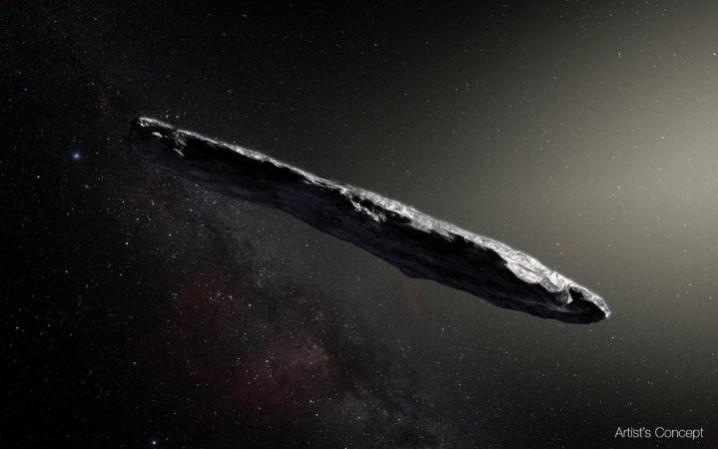
Researchers worldwide have been fascinated about Oumuamua, the first official interstellar object to be observed in our solar system, since the time it was first noticed on October 19, 2017. Now, using the information derived from the observation of NASA's Hubble Space Telescope and ground-based observatories, an international team of scientists has confirmed that this alien object from another star has received an "unexpected boost" in its speed. The route of this extraterrestrial figure has also been shifted, when it traveled through the inner solar system last year.
"Our high-precision measurements of 'Oumuamua's position revealed that there was something affecting its motion other than the gravitational forces of the Sun and planets," stated Marco Micheli from Space Situational Awareness Near-Earth Object Coordination Centre of ESA. Micheli is also the lead author of a paper, published in scientific journal Nature, which details the team's findings of Oumuamua, reported NASA.

According to Davide Farnocchia of the Center for Near Earth Object Studies (CNEOS) at NASA's Jet Propulsion Laboratory, California, this speed boost of the interstellar object denotes similar behavior like a comet. "This additional subtle force on 'Oumuamua likely is caused by jets of gaseous material expelled from its surface. This same kind of outgassing affects the motion of many comets in our solar system," said Farnocchia, the co-author of the paper.
Although comets usually emit huge amounts of dust and gas once they are warmed by the Sun, this interstellar visitor showed no sign of "outgassing" and that's why "these forces were not expected," opined European Southern Observatory's scientist Olivier Hainaut.
The team believes that 'Oumuamua's outgassing must have ejected a very small amount of dust particles, which was enough to give it a little kick in speed, but not enough to be spotted. Astronomer Karen Meech from the University of Hawaii's Institute of Astronomy speculates that the small dust grains might have eroded away during its long journey through interstellar space.
"The more we study 'Oumuamua, the more exciting it gets. I'm amazed at how much we have learned from a short, intense observing campaign. I can hardly wait for the next interstellar object," said Meech, who is also a co-author of the study.
Currently, our first alien visitor is moving away from the Sun at a speed of about 70,000 mph. Oumuamua is currently headed towards the outer edge of the solar system. Scientists estimate that in four years, the figure will pass Neptune's orbit on its way back to the interstellar space.

















